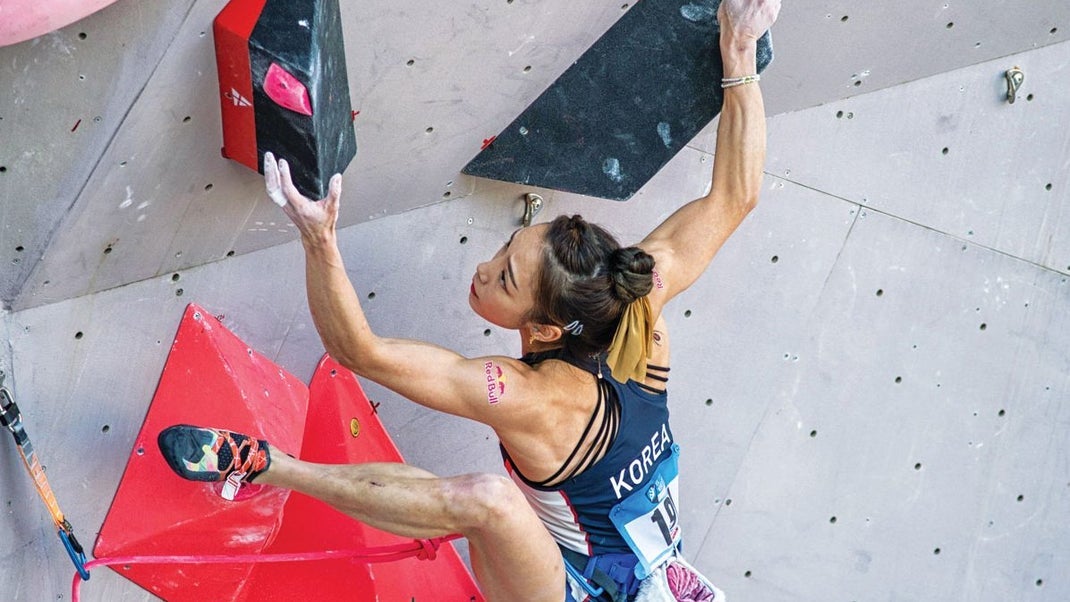Five Tips To Up Your Heel-Hooking Game

Jain Kim, veteran World Cup gold medalist, finding a crucial heel hook in the Lead World Cup, Xiamen, China, 2019. Photo Eddie Fowke/IFSC
Heel hooking is one of those magic, get-sh*t-done maneuvers that can make a seemingly impossible move easy. When done correctly, it helps you reach farther, use less energy, get your body over the lips of roofs or around corners, or simply keep your hips closer to the wall.
While easy to understand, heel hooks are not always easy to apply. Here are five tips to master the nuances.
01
Learn to recognize heel-hook opportunities. Feeling stumped on a move? See if there are any footholds that would help you keep your body close to the wall or get up and over a feature. Was a boulder problem set with a heel hook in mind? The more you practice, the better you will become at recognizing when heel hooks are appropriate. The first heels you throw will likely be low and at normal foot height, but eventually you’ll master heel hooks above your head.
02
Heel placement is just as important as being able to recognize a heel-hook opportunity. Never just slap your heel on something and expect it to hold or help. You will actually have to engage your butt, hamstring, calf and ankle muscles for this gimmick to work. Generally speaking, you will want to turn your ankle into the wall and turn your pinky toe out. Your foot should be about 10 to 45 degrees out from the wall. Angling your foot this way will help you to engage those big leg muscles and take more weight off your upper body. Realize that not every heel hook is the same. Some holds will require a more delicate placement.
03
Hamstring and glute strength are essential to maintaining and generating proper tension. While most climbers remember to do their hangboard and campus exercises, they often mistakenly neglect the lower half. Some of those climbers have limped away from heel hooks with torn hamstrings and LCL injuries. Do some ol’-fashioned squats or lunges. Better yet, lie on the ground and put your heels on an exercise ball. With your hips extending and core engaged (flat back!), roll the ball toward you using your heels and roll it back out. If this is easy, try it with one leg.
04
Not all, but some heel hooks require knee flexibility for proper, safe execution. Be wary of the heel hooks that are placed close to your pelvis and require you to turn your foot out while rocking over. If your knee isn’t ready for it, an LCL tear may be the outcome. Help prevent LCL injuries by ensuring you’ve warmed up your lower half properly.
05
Hip flexibility is another condition for some heel hooks. If you can’t keep your hips close to the wall while your legs are open, you may lose some needed reach. Practice holding the “frog” pose every day by opening your legs up on the ground and reaching forward. Your legs should be out in “T” position from your body. This stretch is not only good for heel hooks, but climbing in general. Another good one is “pigeon” pose.

